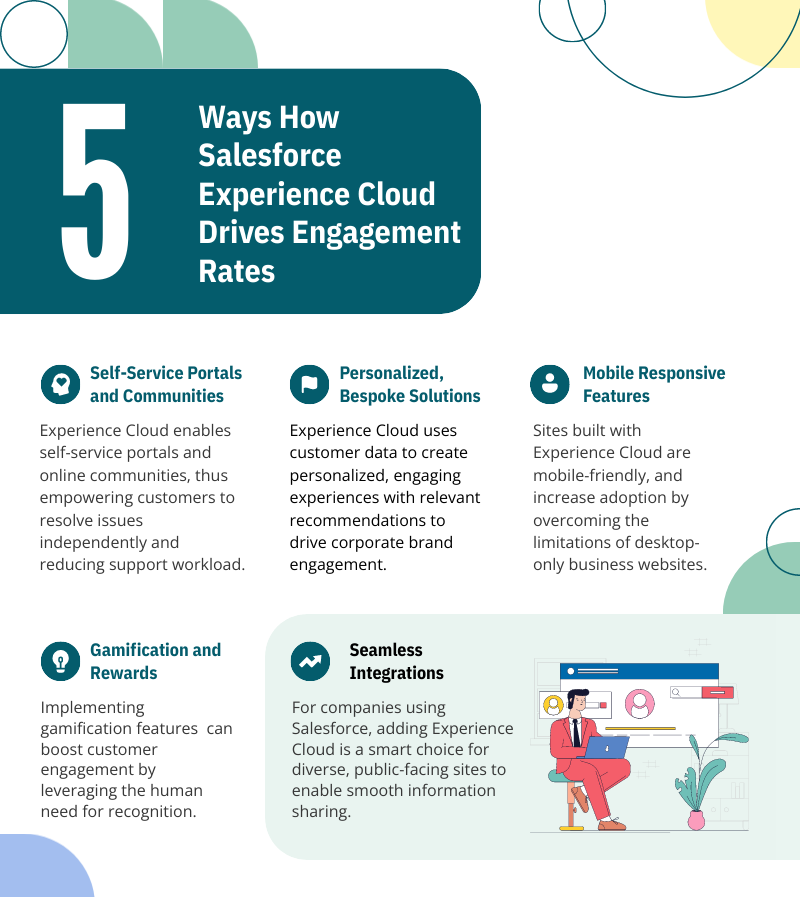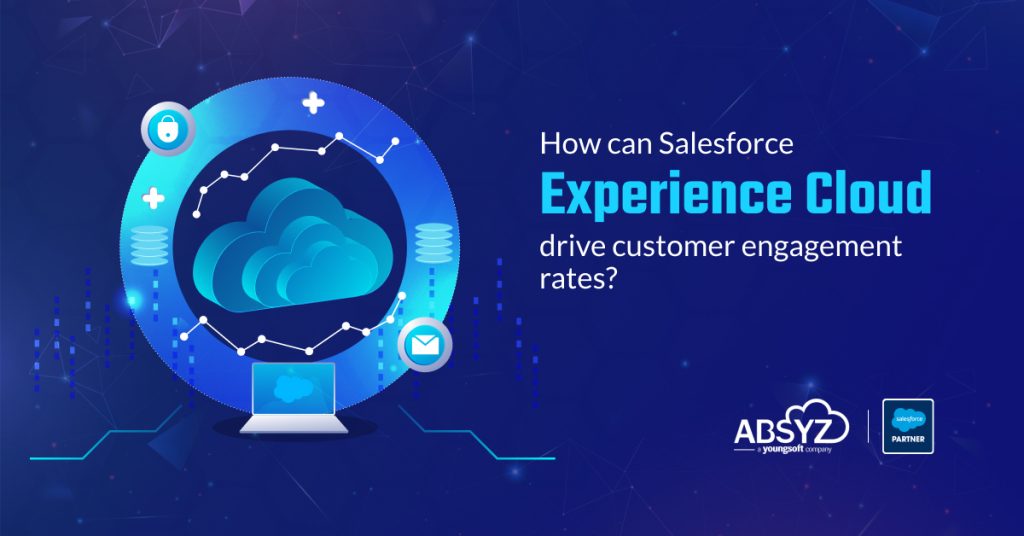
Given how important a uniquely compelling customer experience has become in today’s business age, there is a need to plug this gap. Customers are looking for a platform that offers self-service abilities, thus circumventing the need for a middleman. They are also interested in connecting with other like-minded individuals. Companies are also looking to build tailored interactions for their prospective and existing customers that can lead to a better experience.
There are multiple reasons why Salesforce Experience Cloud has become a hot trend in the market today.
Self-Service Portals and Communities
Businesses can make use of Experience Cloud to set up self-service customer portals that allow customers to access data and gain access to answers for common questions. They allow you to log support cases and resolve issues as well. Customers are thus empowered to take charge of these self-service abilities and reduce the support team’s workload.
Self-service portals enable customers to make decisions with minimal or no human interaction, thus reducing the strain on human resources, who can be deployed for other purposes. Customers will also find it more convenient to have all their information pertaining to a particular company assembled in one place – their portal profile.
Businesses can also set up online communities that use Experience Cloud to let customers interact with others, thus enabling knowledge sharing, collaboration, and feedback. For instance, participants can ask questions or search for solutions to their queries on customer community portals, thus allowing them access to quicker resolutions for their issues.
Personalized, Bespoke Solutions
Businesses can use customer data that they’ve collected, along with their behavior and preferences to create customized experiences that increase customer interest in the brand. Individual customers can access experiences, recommendations, and other forms of content that enhance their engagement and relevance.
Instead of being shown irrelevant product recommendations, customers can now be offered solutions that they actually find useful. Experience Cloud can be customized to show these offerings in compelling, catchy ways to increase customer engagement as well.
Gamification Features
Businesses can implement gamification features like rewards, leaderboards, and badges. Adding such features to an experience cloud can improve engagement and participation levels of customers. Since humans have an innate need for achievement and recognition, they find such features encouraging as well. A good example of this would be the Salesforce Trailhead community, where badges and other forms of recognition are used to encourage folks on their learning journey.
Seamless integration with other Salesforce Cloud products
Marketing Cloud, Service Cloud, and plenty of other Salesforce products can be integrated into Salesforce Experience sites, thus allowing for information to be passed between various touchpoints. For instance, many companies may need public-facing Experience sites for their internal usage, where each site serves a different purpose entirely. This makes sense, especially for companies that are already part of the ecosystem and using a suite of Salesforce products – adding Experience Cloud to their arsenal is the smart choice to make.
Conclusion
By providing such features, Salesforce helps companies create digital spaces that offer a bunch of features to their valued customers. Having such offerings can be useful in gaining a competitive advantage over other players in the market, which explains why Salesforce Experience Cloud is so widely preferred. With Salesforce releasing new updates and features to the Cloud that are aimed at catering to their customer’s preferences, an Experience Cloud site is a must-have in the arsenal of any company looking to take their customer satisfaction to the next level.


















